#point cloud to revit model
Text
Harnessing the Power of Scan to BIM Technology in the AEC Industry

Scan to BIM services has become a marvel in the AEC industry due to its list of benefits. AEC professionals now easily execute the entire remodeling project with the help of technology without any delays or cost overruns. Moreover, it also helps AEC professionals to remain on the same page, resulting in enhanced communication and collaboration.
#scan to bim#scan to bim services#point cloud to bim#laser scan to 3d model#laser scan to bim#point cloud to bim services#scan to bim modeling#point cloud to revit#scan to bim company#point cloud to revit model#point cloud to bim model#point cloud to 3d model
2 notes
·
View notes
Text
From Laser Scans to BIM Models: A Comprehensive Guide
In the ever-evolving field of Architecture, Engineering, Construction, and Operations (AECO), transitioning from traditional methods to digital solutions is vital for enhancing efficiency, accuracy, and collaboration. One such transformative process is Scan-to-BIM, which involves capturing real-world conditions using laser scanning technology and converting this data into detailed Building Information Models (BIM). This comprehensive guide explores the Scan-to-BIM process, its benefits, applications, and future trends.
What is Scan-to-BIM?
Scan-to-BIM is a process that utilizes laser scanning technology to capture precise spatial data of existing structures and environments. This data is then used to create highly accurate 3D BIM models. The process bridges the gap between physical reality and digital representation, providing a reliable foundation for renovation, restoration, and new construction projects.
The Scan-to-BIM Process
Laser Scanning:
Data Capture: High-definition laser scanners are used to capture detailed spatial data. These scanners emit laser beams that bounce back from surfaces, creating a point cloud representing the scanned area.
Point Cloud Creation: The captured data is processed to form a point cloud, a dense collection of 3D points representing the scanned surfaces and structures.
Data Processing:
Point Cloud Cleaning: The point cloud data is cleaned and filtered to remove noise and irrelevant points, ensuring accuracy.
Registration: Multiple scans are aligned and combined to form a single, cohesive point cloud that accurately represents the entire scanned area.
Modeling:
BIM Model Creation: The processed point cloud is imported into BIM software, which serves as a reference for creating the 3D model. Architects and engineers use this data to develop detailed and accurate BIM models, including architectural, structural, and MEP (Mechanical, Electrical, and Plumbing) elements.
Quality Control: The BIM model is reviewed and validated to ensure it accurately reflects the existing conditions and meets project requirements.
Related blog: Scan To BIM Introduction – From Technology To The BIM Model
Benefits of Scan-to-BIM
Accuracy and Precision: Laser scanning provides highly accurate and detailed measurements, reducing the likelihood of errors in the BIM model.
Time and Cost Efficiency: Capturing and modeling existing conditions is faster and more efficient than traditional surveying methods, leading to cost savings and shorter project timelines.
Improved Collaboration: A detailed and accurate BIM model facilitates better communication and collaboration among project stakeholders, ensuring everyone works with the same information.
Enhanced Project Planning: Accurate BIM models enable better project planning and decision-making, minimizing risks and uncertainties.
Facilitates Renovation and Restoration: Scan-to-BIM is particularly useful for renovation and restoration projects, providing a precise digital representation of existing structures.
Applications of Scan-to-BIM
Renovation and Restoration: Scan-to-BIM is essential for projects involving the renovation or restoration of historic buildings, allowing for accurate documentation and planning.
Facility Management: Facility managers use BIM models created from scans for maintenance, operation, and space management, ensuring efficient building management throughout its lifecycle.
Construction: During construction, Scan-to-BIM ensures that the work aligns with the design, reducing errors and rework.
Quality Control: Scan-to-BIM enables continuous quality control by providing accurate as-built documentation, ensuring the final construction matches the design.

Future Trends in Scan-to-BIM
Integration with Emerging Technologies: The integration of Scan-to-BIM with technologies such as Augmented Reality (AR), Virtual Reality (VR), and Artificial Intelligence (AI) will enhance visualization, data analysis, and decision-making.
Automation and AI: Advances in AI and machine learning will automate the processing and modeling of point cloud data, further increasing efficiency and reducing manual intervention.
Improved Accessibility and Cost Reduction: As laser scanning technology becomes more accessible and affordable, its adoption in Scan-to-BIM processes will increase, making it a standard practice in the AECO industry.
Enhanced Collaboration Tools: Cloud-based platforms facilitate real-time collaboration and data sharing, making Scan-to-BIM workflows more seamless and integrated.
Conclusion
The transition from laser scans to BIM models revolutionizes the AECO industry, providing a digital foundation that enhances accuracy, efficiency, and collaboration. As technology advances, Scan-to-BIM will play an increasingly vital role in project planning, execution, and management.
0 notes
Text
Convert Point Cloud Data to 3D Revit Model
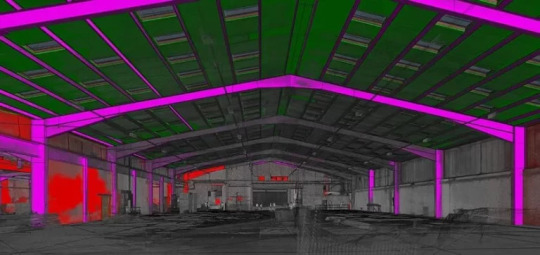
Renovation and restoration of heritage buildings add further challenges to the conversion of point clouds into Revit 3D models. These challenges include inconsistent or missing information, inaccurate interpretation of scanned data of complex geometry, and various other barriers. Point cloud to BIM modeling addresses these challenges. Detailed point clouds for 3D models with the right Revit workflows lead to time and cost savings and enhanced ROI. https://bit.ly/44WSw6y
#point cloud to 3d model#point cloud to bim#3d bim#point cloud to bim services#scan to bim revit#point cloud to bim model
3 notes
·
View notes
Photo

Cadeosys providing Point Cloud Scan to BIM Modeling Services In USA & India. No matter how complicated the structure or location, we offer dependable point cloud survey services to architectural, construction, and industrial projects. We also offer comprehensive point cloud to BIM modelling services globally.
For additional information, give us a call right now or use our online inquiry form.
Website: https://cadeosys.com/
https://cadeosys.us/
Contact : 9037963633
https://www.facebook.com/Cadeosys
#cadeosys#aec#construction#BIM Modeling#onsitecoordination#clash detection#As Built Drawing#cad outsourcing#bim#mep#HVAC#REVIT#BIM outsourcing#Autocad#engineering services#3D rendering#Drafting#2D Drafting#3D modeling#point Cloud Services#plumbing#cad#outsourcing services#Mechanical Engineering#electricalengineering#india#usa
5 notes
·
View notes
Text

Streamlining Your Building Information Modeling Needs
"Revit BIM Services" encompass a comprehensive range of solutions tailored to meet your Building Information Modeling (BIM) requirements using Autodesk Revit software. Our services include BIM modeling, coordination, clash detection, quantity takeoff, and more, designed to optimize your project workflow and enhance collaboration among stakeholders. With our expertise in Revit, we ensure accurate and efficient delivery of BIM services to support your architectural, engineering, and construction projects. Explore our Revit BIM services to unlock the full potential of BIM for your next project.
#3D BIM Modeling Services#3D BIM Modeling#3D BIM Modeling Services New York#3D BIM Modelling Services DC#3D Reality Capture For Building Construction#Reality Capture 3D#Reality Capture Services#Reality Capture Software#Point Cloud To BIM Services#AEC BIM Services#Revit BIM Services
0 notes
Text
Scan to CAD and point cloud to BIM modeling services
Introduction:
In the dynamic realm of architecture, engineering, and construction (AEC), leveraging cutting-edge technologies is paramount for efficiency, accuracy, and innovation. One such transformative process gaining significant traction is Scan to CAD and Point Cloud to BIM Modeling Services. These services offer a bridge between physical reality and digital design, revolutionizing traditional workflows and opening avenues for unprecedented precision and creativity. Scan to CAD and Point Cloud to BIM modeling services have emerged as transformative tools, revolutionizing how professionals conceptualize, design, and execute projects.

Introduction to Scan to CAD and Point Cloud to BIM Modeling Services:
Scan to CAD involves the conversion of scanned data from physical objects or environments into Computer-Aided Design (CAD) files. On the other hand, Point Cloud to Building Information Modeling (BIM) entails the transformation of three-dimensional point cloud data into intelligent BIM models. These services collectively offer a comprehensive solution for modern design challenges. Scan to CAD processes capture detailed spatial information of physical structures with remarkable precision. This data is then transformed into digital CAD models, providing designers and engineers with a comprehensive virtual representation of the scanned environment.
Enhanced Accuracy and Precision:
One of the key advantages of Scan to CAD and Point Cloud to BIM Modeling Services is their ability to capture intricate details with unparalleled accuracy. By utilizing advanced scanning technologies such as LiDAR (Light Detection and Ranging) and photogrammetry, every nuance of the physical environment can be accurately captured and translated into digital models, ensuring precise representation in the design phase.
Efficiency and Time Savings:
Traditional methods of manual measurement and drafting are not only time-consuming but also prone to errors. Scan to CAD and Point Cloud to BIM services streamline the design process by significantly reducing the time required for data acquisition and model generation. This efficiency translates into faster project delivery timelines and cost savings for stakeholders.
Seamless Integration with Existing Workflows:
These services seamlessly integrate with existing design workflows, enhancing collaboration among architects, engineers, and construction professionals. The compatibility of CAD and BIM models ensures smooth communication and data exchange throughout the project lifecycle, from conceptualization to construction and beyond.
Improved Visualization and Analysis:
By converting point cloud data into intelligent BIM models, designers gain access to powerful visualization and analysis tools. This enables them to explore different design scenarios, conduct clash detection, and simulate real-world conditions with greater accuracy, leading to informed decision-making and optimized design outcomes. Facilitating Renovation and Retrofit Projects:
Scan to CAD and Point Cloud to BIM services are particularly valuable for renovation and retrofit projects where accurate as-built documentation is essential. By capturing existing conditions in detail and creating precise digital models, designers can seamlessly integrate new elements into existing structures, minimizing disruptions and maximizing efficiency.
Supporting Sustainable Design Practices:
The ability to accurately assess existing building conditions and visualize the impact of design changes contributes to sustainable design practices. By optimizing energy efficiency, material usage, and building performance, Scan to CAD and Point Cloud to BIM Modeling Services play a crucial role in creating environmentally conscious and resource-efficient structures.
Enhancing Safety and Risk Mitigation:
Accurate documentation of existing conditions through point cloud scanning reduces safety risks associated with site visits and manual measurements. Moreover, by identifying potential clashes and design inconsistencies early in the process, these services help mitigate construction errors and costly rework, enhancing overall project safety and quality.
Adapting to Evolving Industry Trends:
As the AEC industry continues to embrace digital transformation, Scan to CAD and Point Cloud to BIM Modeling Services are poised to play an increasingly integral role. From augmented reality (AR) and virtual reality (VR) applications to the integration of artificial intelligence (AI) for automated modeling tasks, the possibilities for innovation are vast and evolving.
Conclusion:
Rvtcad represents Scan to CAD, and Point Cloud to BIM Modeling Services represents a paradigm shift in the way architectural and construction projects are conceived, designed, and executed. By harnessing the power of advanced scanning technologies and intelligent modeling algorithms, these services empower designers to push the boundaries of creativity while ensuring accuracy, efficiency, and sustainability in every project they undertake. Embracing these transformative capabilities is not just a choice but a necessity for staying competitive in today's rapidly evolving AEC landscape.
#Scan to cad#point cloud to bim modeling#scan to bim#point cloud to bim#bim services#3d laser scanning#bim laser scanning#scan to revit#as-built drawing#as-built drawings#point cloud to cad
0 notes
Text
How to Convert Point Clouds to Revit: A Beginner’s Guide

Converting point clouds to Revit models is a significant part of the present day architectural workflows, assuring precision and accuracy, while keeping flexibility within digital environments, including parametric modelling. This workflow starts with data collection procedure ( common practice is point cloud capture using laser scanning equipment to capture with high precision the figure and features of the given space). Following that, move to offer up data to Autodesk Revit, which is currently the popular software in architectural and building sector for design and documentation.
Revit uses point cloud as a reference with an advanced level of details, which is of great importance to architects and engineers to reproduce the buildings with fine accuracy. With the main purpose of the document being to shed light on this conversion, this guide will be providing step by step instructions that would as well be very effective in integrating the Point Cloud data with Revit projects.
0 notes
Text
Affordable Building Information Modeling (BIM) Services in Oxford, UK

Silicon EC UK Limited is the most trusted and fastest-growing engineering company in the UK which provides Building Information Modeling Services to our clients. It specializes in providing high-quality BIM Drafting Services, BIM Drawing Services, and 3D BIM Modelling structures with the help of BIM Software.
Visit our website :
#bim services#bim consultant#bim design#bim drafting#3d bim modeling services#structural bim services#bim revit#Building Information Modeling Services#Revit BIM Modeling Services#BIM Services#BIM Shop Drawing Services#BIM Clash Detection Services#LOD BIM Service#Revit BIM Family Creation Services#Structural BIM Services#BIM Coordination Services#Point Cloud to BIM Services#BIM 3DModeling Services#Building Information Modeling#Revit BIM Services#BIM Design Services#BIM Consulting Services#bim service providers#BIM Services London#bim service provider#BIM service providers in London#BIM drafting London#bim modelling services#bim services provider#BIM service provider London
0 notes
Text
https://www.virtualbuildingstudio.com/convert-point-cloud-data-into-revit-models/
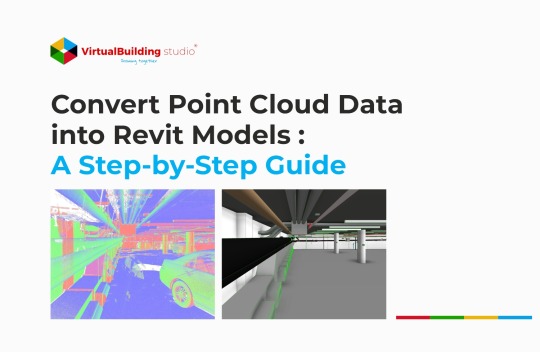
0 notes
Text
Point Cloud to BIM Services for Land Surveyors
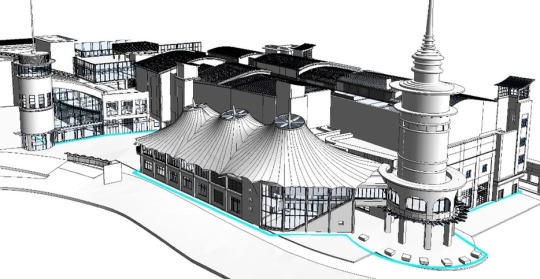
HitechDigital is a leading BIM service provider specializing in Point cloud to BIM services, developing as-built Revit models and CAD drawings. We convert 3D laser scans captured by Matterport, Faro, Leica, Trimble, Truescan, 360 photos etc. (in .rcp, .rcs, .obj, .las etc.) into architectural, structural and MEPF 3D Revit models along with 2D CAD plans.
#laser scan to bim#point cloud conversion#point cloud modeling#point cloud to bim#scan to bim#scan to revit model
0 notes
Text
Digital Construction with the Role of Scan to BIM in Project Management
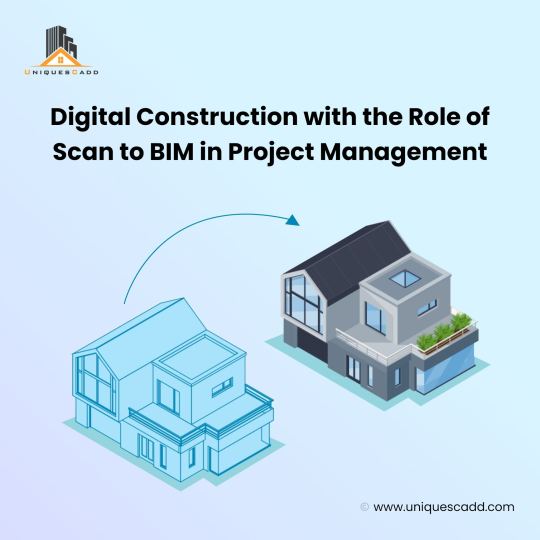
Once the construction phase is completed, maintaining throughout the lifecycle of the building is must. Equipment repairs, potential upgradation or any other remodeling or refurbishment requires accurate data. This enables facility managers to make better informed decisions for existing buildings and maintain them in an accurate manner.
Checkout how scan to BIM plays a vital role in the same.
#scan to bim#scan to bim services#point cloud to bim#laser scan to 3d model#laser scan to bim#point cloud to bim services#scan to bim modeling#point cloud to revit#scan to bim company#point cloud to revit model#point cloud to bim model#point cloud to 3d model
1 note
·
View note
Text
Quick Start: Point Cloud to Revit Modeling Guide
The "Point Cloud to Revit Modeling Quick Guide" offers a concise yet comprehensive overview of the process of converting point clouds to 3D models using Revit software. This guide provides step-by-step instructions, tips, and best practices for efficiently importing, processing, and integrating point cloud data into Revit, enabling users to create accurate and high-quality building models for architectural, engineering, and construction projects. Whether you're a beginner or an experienced user, this guide serves as a valuable resource for navigating the complexities of point cloud to Revit modeling effectively.
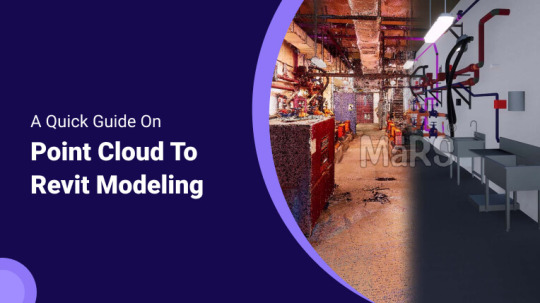
0 notes
Text
3D Revit Modeling from Point Cloud Data
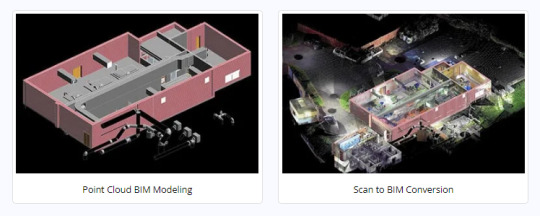
A building construction company from the UK approached Hitech BIM Services. With a need for Scan to BIM modeling of the institute’s mechanical backyard, the client provided images and files as input. Our team built a coordinated and clash-free BIM model with the relevant architectural and structural requirements. This led to informed decision-making for the client, reinforced with diminished risks and cost and time reduction.
0 notes
Text
Architectural BIM Outsourcing Services In India, USA - Cadeosys
Cadeosys Offers Architectural BIM Modeling Services In India & USA. We provide architecture, engineering, and construction (AEC) companies throughout the world with a variety of BIM solutions.
Call: 090379 63633
http://cadeosys.com

#cadeosys#mep#mechanical#hvac#plumbing#unitedsates#bim#cad#architectural#engineering consultancy#building design#revit#rendering#point cloud to 3d modeling#2D drafting services#Fire Fighting#Structural BIM Services
0 notes
Text
The Benefits of Hiring a BIM Consultant in NYC for Your Design and Construction Projects
Seeking a BIM Consultant NYC or 3D BIM Modeling Services in New York City? Look no further! Our Director of Business Development has relocated from Hawaii to New York City, making now the perfect time to connect with us.
#3D BIM Modeling Services#3D BIM Modelling Services DC#Point Cloud To BIM Services#Revit BIM Services
0 notes
Text
Point Clouds in Revit for Comprehensive BIM Modeling
Introduction:
In the realm of Building Information Modeling (BIM), the integration of point clouds into Revit has emerged as a game-changer. Point clouds, generated through laser scanning technology, offer a wealth of spatial data that can revolutionize the accuracy and detail of BIM models. In this article, we delve into the transformative potential of point clouds within the Revit environment, exploring how they enhance the comprehensiveness of BIM modeling.

Understanding Point Clouds:
Point clouds represent a collection of data points in three-dimensional space, capturing the precise geometry and spatial characteristics of physical environments. These data sets are generated through laser scanning devices, which emit laser beams to measure distances and record millions of points within a scene. The result is a highly detailed representation of real-world structures, encompassing everything from intricate architectural features to subtle surface irregularities.
Point clouds serve as digital replicas of physical spaces, offering an immersive and detailed view of real-world environments. Generated by advanced laser scanning devices, these data sets consist of millions of individual points, each representing a specific location in three-dimensional space. Laser scanners emit laser beams that bounce off surfaces within a scene, measuring distances and capturing the spatial coordinates of points in the process.
Integration with Revit:
Revit, renowned for its prowess in BIM modeling, provides a robust platform for integrating point clouds seamlessly into the design process. By importing point cloud data directly into Revit, architects, engineers, and construction professionals gain access to a wealth of information that serves as a foundation for their BIM models.
This integration bridges the gap between the physical and digital realms, allowing for unparalleled accuracy and fidelity in virtual representations of built environments. The integration of point clouds with Revit, a premier software in Building Information Modeling (BIM), marks a significant advancement in the construction industry's digital transformation. Revit's capabilities extend far beyond traditional CAD software, offering a comprehensive platform that facilitates the creation, analysis, and documentation of building designs. With the ability to directly import point cloud data, Revit empowers architects, engineers, and construction professionals to leverage the wealth of information captured through 3D laser scanning technologies.
Enhancing Accuracy and Precision:
One of the primary advantages of incorporating point clouds into Revit is the enhancement of modeling accuracy and precision. Traditional methods of manual measurement and documentation often fall short in capturing the intricacies of complex structures. Point clouds, on the other hand, offer a level of detail that surpasses conventional techniques, enabling designers to create BIM models that closely mirror reality. From as-built documentation to renovation projects, the use of point clouds ensures that BIM models accurately reflect existing conditions, minimizing errors and discrepancies throughout the design and construction process.
Facilitating As-Built Documentation:
In retrofit and renovation projects, accurate as-built documentation is essential for informed decision-making and seamless execution. Point clouds provide a comprehensive record of existing structures, allowing designers to capture precise measurements and dimensions with minimal disruption to ongoing operations. By importing point cloud data into Revit, stakeholders can create as-built BIM models that serve as a reliable reference throughout the project lifecycle. This streamlined approach not only accelerates the documentation process but also mitigates the risks associated with inaccuracies and discrepancies in existing conditions.
Visualizing Complex Environments:
The visualization capabilities of point clouds within Revit are unparalleled, offering designers the ability to immerse themselves in highly detailed 3D representations of physical spaces. Whether analyzing existing structures or conceptualizing new designs, the integration of point clouds provides invaluable insights into spatial relationships, material properties, and architectural nuances. By overlaying point cloud data onto BIM models, designers can make informed decisions regarding spatial layout, clash detection, and design optimization, thereby improving the overall quality and efficiency of the design process.
Streamlining Collaborative Workflows:
Effective collaboration lies at the heart of successful BIM projects, and point clouds play a pivotal role in facilitating communication and coordination among project stakeholders. By centralizing point cloud data within the Revit environment, multidisciplinary teams can work collaboratively on a unified platform, ensuring that everyone has access to the most up-to-date information. This integrated approach fosters greater transparency, reduces rework, and enhances the overall efficiency of project delivery.
Conclusion:
In conclusion, Rvtcad the integration of point clouds into Revit represents a significant advancement in the field of BIM modeling. By harnessing the power of laser scanning technology, designers can create comprehensive and highly accurate virtual representations of built environments. From enhancing accuracy and precision to facilitating collaborative workflows, point clouds offer a multitude of benefits that elevate the quality and efficiency of BIM projects. As technology continues to evolve, the synergy between point clouds and Revit is poised to reshape the future of architectural design and construction.
#point clouds#bim modeling#scan to bim#point cloud to bim#bim services#3d laser scanning#as-built drawing#bim laser scanning#scan to revit#scan to cad#as-built drawings#point cloud to cad
0 notes